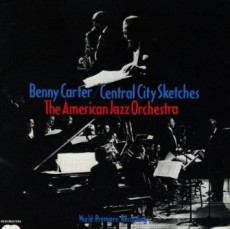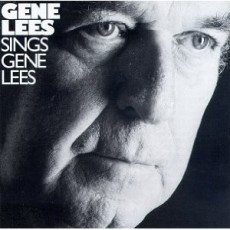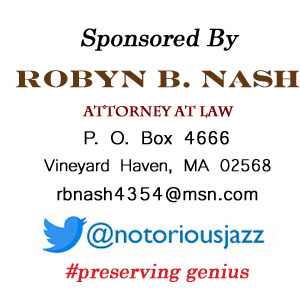
Daily Dose Of Jazz…
Gary Giddins was born on March 21, 1948 in Brooklyn and raised on Long Island, New York. He graduated from Grinell College in Iowa in 1970 and began freelance work as a music and film critic. By 1974 he landed a position as a columnist with the Village Voice writing a column called Weather Bird, a position he held until 2003.
In 1986 Gary along with John Lewis, pianist and music director of the Modern Jazz Quartet, created the American Jazz Orchestra, which presented concerts using a jazz repertory with musicians such as Tony Bennett.
Of his many accolades and honors in writing, film and broadcasting Giddins has won a Grammy for liner notes on Sinatra: The Voice, six ASCAP–Deems Taylor Awards, Jazz Times Readers Poll, a Guggenheim Fellowship, a Peabody Award in Broadcasting, the National Book Critics Circle Award, the Ralph J. Gleason Music Book Award, ARSC Award for Excellence in Historical Sound Research and the Bell Atlantic Award for Visions of Jazz: The First Century in 1998.
He has authored Bing Crosby: A Pocketful of Dreams-The Early Years 1903-1940, Weatherbird: Jazz at the Dawn of Its Second Century, Faces in the Crowd, Natural Selection, and biographies of Louis Armstrong and Charlie Parker.
Jazz and film critic, author, and director, Gary Giddins is currently the Executive Director of the Leon Levy Center for Biography at the Graduate Center of the City University of New York.

Daily Dose Of Jazz…
Frederick Eugene John “Gene” Lees was born in Canada on February 8, 1928 the eldest of four children. He began his writing career as a newspaper reporter in 1948 prior to moving to the U.S. and becoming a music critic at the Louisville Times in Kentucky. By the end of the Fifties he was editor of Down Beat magazine.
As a freelance writer, Lees wrote for Stereo Review, High Fidelity and the New York Times in the U.S. along with several Canadian publications like the Toronto Star and Maclean’s. As a biographer, Lees has written about Oscar Peterson, Lerner & Loewe, Henry Mancini, Woody Herman and about racism in jazz music in “Cats of Any Color: Jazz Black and White”.
Gene wrote nearly one hundred liner notes for artists as diverse as Stan Getz, John Coltrane and Quincy Jones. As a novelist he published “And Sleep Until Noon” in 1967 and his second book, “Song Lake Summer” was published in 2008. He won his first of five ASCAP-Deems Taylor Awards in 1978 for a series of articles published in High Fidelity about US music. Lees’ famous monthly “Jazzletter” was established in 1981, and contains musical criticism by Lees and others.
In the early 60s he studied composition by correspondence with the Berklee College of Music, piano with Tony Aless, guitar with Oscar Castro-Neves and became a lyricist translating and writing English lyrics for the Portuguese bossa nova tunes. He wrote the lyrics for Antonio Carlos Jobim’s Corcovado re-titled “Quiet Nights of Quiet Stars”, also “Someone To Light Up My Life”, “Song of the Jet”, “The Happy Madness” and “Dreamer”. He has said that Frank Sinatra’s recording of Quiet Nights was the definitive rendition. He also contributed lyrics to Milton Nascimento’s Bridges, Charles Aznavor Broadway concert, “One World, One Peace” – the poems of Pope John Paul II recorded by Sarah Vaughan and recorded Bridges – Gene Lees Sings Gene Lees.
Gene Lees, music critic, biographer, lyricist and journalist struggled with heart disease in his later years and died on April 22, 2010 in Ojai, California.
More Posts: biographer,critic,journalist,lyricist

Daily Dose Of Jazz…
Leonard Geoffrey Feather was born on September 13, 1914 in London, England and learned to play the piano and clarinet without formal training and started writing about jazz and film by his late teens. At age of twenty-one, Feather made his first visit to the United States and after working in the U.K. and the U.S. as a record producer finally settled in New York City in 1939, where he lived until moving to Los Angeles, California in 1960.
His compositions have been widely recorded, including “Evil Gal Blues” and “Blowtop Blues” by Dinah Washington, and what is possibly his biggest hit, “How Blue Can You Get?” by blues artists Louis Jordan and B. B. King, and some of his own recordings as a bandleader are still available. But it was as a journalist, critic, historian, and campaigner that he made his biggest mark as one of the most widely read and most influential writer on jazz, and having written the liner notes for hundreds of jazz albums.
Leonard wrote the lyrics to the Benny Golson jazz composition “Whisper Not” which was then recorded by Ella Fitzgerald on her 1966 Verve release of the same name. He was co-editor of the Metronome Magazine and served as the chief jazz critic for the Los Angeles Times until his death on September 22, 1994 in Sherman Oaks, California at age eighty.
He leaves a legacy of a talented daughter, vocalist Lorraine Feather, a couple of dozen albums and several books such as The Encyclopedia Yearbook of Jazz in the Sixties, Inside Jazz and From Satchmo to Miles among others.



